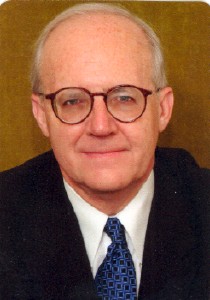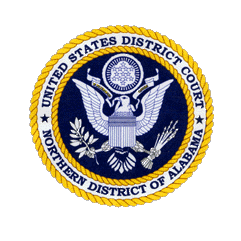Reverse discrimination is a term used to describe discrimination against members of a dominant or majority group, in favor of members of a minority or historically disadvantaged group.
Regents of the University of California v. Bakke, 438 U.S. 265 (1978), was a landmark decision by the Supreme Court of the United States that involved a dispute of whether preferential treatment for minorities could reduce educational opportunities for whites without violating the Constitution. It upheld affirmative action, allowing race to be one of several factors in college admission policy. However, the court ruled that specific racial quotas, such as the 16 out of 100 seats set aside for minority students by the University of California, Davis, School of Medicine, were impermissible.
Grutter v. Bollinger, 539 U.S. 306 (2003), was a landmark case of the Supreme Court of the United States concerning affirmative action in student admissions. The Court held that a student admissions process that favors "underrepresented minority groups" did not violate the Fourteenth Amendment's Equal Protection Clause so long as it took into account other factors evaluated on an individual basis for every applicant. The decision largely upheld the Court's decision in Regents of the University of California v. Bakke (1978), which allowed race to be a consideration in admissions policy but held racial quotas to be unconstitutional. In Gratz v. Bollinger (2003), a separate case decided on the same day as Grutter, the Court struck down a points-based admissions system that awarded an automatic bonus to the admissions scores of minority applicants.
Gratz v. Bollinger, 539 U.S. 244 (2003), was a United States Supreme Court case regarding the University of Michigan undergraduate affirmative action admissions policy. In a 6–3 decision announced on June 23, 2003, Chief Justice Rehnquist, writing for the Court, ruled the University's point system's "predetermined point allocations" that awarded 20 points towards admission to underrepresented minorities "ensures that the diversity contributions of applicants cannot be individually assessed" and was therefore unconstitutional.

Frank Hoover Easterbrook is an American lawyer and jurist who has served as a United States circuit judge of the U.S. Court of Appeals for the Seventh Circuit since 1985. He was the Seventh Circuit's chief judge from 2006 to 2013.

Proposition 209 is a California ballot proposition which, upon approval in November 1996, amended the state constitution to prohibit state governmental institutions from considering race, sex, or ethnicity, specifically in the areas of public employment, public contracting, and public education. Modeled on the Civil Rights Act of 1964, the California Civil Rights Initiative was authored by two California academics, Glynn Custred and Tom Wood. It was the first electoral test of affirmative action policies in North America. It passed with 55% in favor to 45% opposed.
Lino Anthony Graglia was the A. W. Walker Centennial Chair in Law at the University of Texas specializing in antitrust litigation. He earned a BA from the City College of New York in 1952, and an LLB from Columbia University in 1954, before working in the Eisenhower administration's United States Department of Justice. He thereafter practiced law in Washington, D.C., and New York City before joining the University of Texas' law school in 1966.
DeFunis v. Odegaard, 416 U.S. 312 (1974), was a United States Supreme Court case in which the Court held that the case had become moot and so declined to render a decision on the merits. American student Marco DeFunis, who had been denied admission to the University of Washington School of Law in the state of Washington before he was provisionally admitted during the pendency of the case, was slated to graduate within a few months of the decision being rendered.

Danny Julian Boggs is an American attorney and a senior United States circuit judge of the United States Court of Appeals for the Sixth Circuit. He was appointed to the court in 1986 and served as its Chief judge from September 2003 to August 2009. Boggs was on the short list of President George W. Bush's candidates for the U.S. Supreme Court.

The Michigan Civil Rights Initiative (MCRI), or Proposal 2, was a ballot initiative in the U.S. state of Michigan that passed into Michigan Constitutional law by a 58% to 42% margin on November 7, 2006, according to results officially certified by the Michigan Secretary of State. By Michigan law, the Proposal became law on December 22, 2006. MCRI was a citizen initiative aimed at banning consideration of race, color, sex, or religion in admission to colleges, jobs, and other publicly funded institutions – effectively prohibiting some affirmative action by public institutions based on those factors. The Proposal's constitutionality was challenged in federal court, but its constitutionality was ultimately upheld by the Supreme Court of the United States.
The University of Texas School of Law is the law school of the University of Texas at Austin, a public research university in Austin, Texas. According to Texas Law’s 2019 disclosures, 90 percent of the Class of 2019 obtained full-time, long-term bar passage required/JD advantage employment nine months after graduation.
The Center for Individual Rights (CIR) is a non-profit public interest law firm in the United States. Based in Washington, D.C., the firm is "dedicated to the defense of individual liberties against the increasingly aggressive and unchecked authority of federal and state governments". The Center claims it is officially nonpartisan, although its funding is connected to the Religious Right and the Olin Foundation. Its work focuses on enforcement of constitutional limits on state and federal power, primarily through litigation.

In the United States, affirmative action consists of government-mandated, government-approved, and voluntary private programs granting special consideration to historically excluded groups, specifically racial minorities and women. These programs tend to focus on access to education and employment in order to redress the disadvantages associated with past and present discrimination. Another goal of affirmative action policies is to ensure that public institutions, such as universities, hospitals, and police forces, are more representative of the populations they serve.
Parents Involved in Community Schools v. Seattle School District No. 1, 551 U.S. 701 (2007), also known as the PICS case, is a United States Supreme Court case which found it unconstitutional for a school district to use race as a factor in assigning students to schools in order to bring its racial composition in line with the composition of the district as a whole, unless it was remedying a prior history of de jure segregation. Chief Justice Roberts wrote in his plurality opinion that "The way to stop discrimination on the basis of race is to stop discriminating on the basis of race."

Jerry Edwin Smith is an American attorney and jurist serving as a United States circuit judge of the United States Court of Appeals for the Fifth Circuit.

Tompkins v. Alabama State University, 15 F. Supp. 2d 1160, was a legal case involving affirmative action, that was decided in a United States Federal Court.
Fisher v. University of Texas, 570 U.S. 297 (2013), also known as Fisher I, is a United States Supreme Court case concerning the affirmative action admissions policy of the University of Texas at Austin. The Supreme Court voided the lower appellate court's ruling in favor of the university and remanded the case, holding that the lower court had not applied the standard of strict scrutiny, articulated in Grutter v. Bollinger (2003) and Regents of the University of California v. Bakke (1978), to its admissions program. The Court's ruling in Fisher took Grutter and Bakke as given and did not directly revisit the constitutionality of using race as a factor in college admissions.
Schuette v. Coalition to Defend Affirmative Action, 572 U.S. 291 (2014), was a landmark decision of the Supreme Court of the United States concerning affirmative action and race- and sex-based discrimination in public university admissions. In a 6-2 decision, the Court held that the Fourteenth Amendment's Equal Protection Clause does not prevent states from enacting bans on affirmative action in education.
Students for Fair Admissions v. Harvard, 600 U.S. 181 (2023), is a landmark decision of the Supreme Court of the United States in which the court held that race-based affirmative action programs in college admissions processes violate the Equal Protection Clause of the Fourteenth Amendment. With its companion case, Students for Fair Admissions v. University of North Carolina, the Supreme Court effectively overruled Grutter v. Bollinger (2003) and Regents of the University of California v. Bakke (1978), which validated some affirmative action in college admissions provided that race had a limited role in decisions.
Fisher v. University of Texas, 579 U.S. 365 (2016) is a United States Supreme Court case which held that the Court of Appeals for the Fifth Circuit correctly found that the University of Texas at Austin's undergraduate admissions policy survived strict scrutiny, in accordance with Fisher v. University of Texas (2013), which ruled that strict scrutiny should be applied to determine the constitutionality of the University's race-conscious admissions policy.








